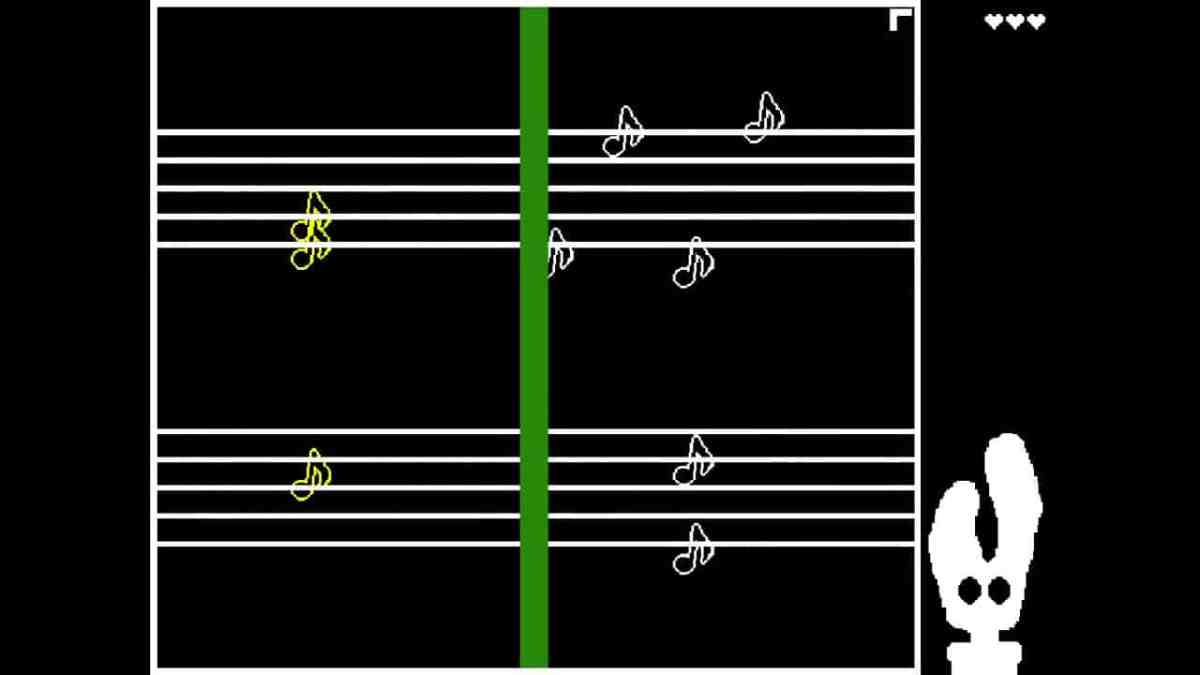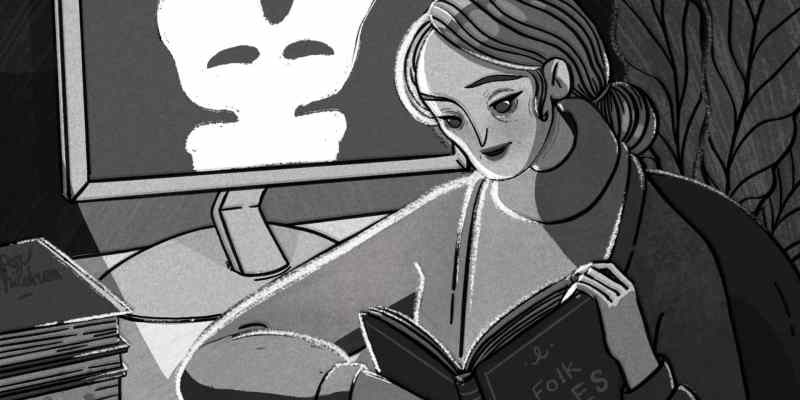“Where do you get your ideas?” is a question every creative person dreads. The asker often wants a simple explanation, as though most of us are hit by bolts of inspiration rather than a collection of thoughts and impressions snowballing through hard work into a cohesive thing. Creation is slow and iterative, with the final result often ending up quite different from what sparked the idea in the first place. Press Any Button is a wonderful exploration of this creative process, a free game that adds and adjusts aspects of gameplay with every level. An arcade puzzler that is hosted by a curious AI, the game offers a steep challenge and great creative insight.
The player is a participant in a survey about video games, tasked with pressing a button whenever a square crosses over a green line. The line gets smaller and smaller, but the survey disappears entirely when the computer’s resident artificial intelligence, nicknamed A-Eye, decides the game is too boring. With his limited access to the internet, A-Eye has seen a great number of video games and wishes to design one himself.
Piece by piece the game is created and modified, a falling block game with increasingly difficult rules. Between rounds, the player gets to know A-Eye better, a creature that is both fascinated with and slightly horrified by human existence. Block by block and death after death, the friendship with the AI deepens, but at the same time one begins to wonder what such an intelligence is doing in a simple survey, as well as if his motives can be trusted.

Gameplay in Press Any Button remains simple throughout but becomes difficult quickly. Blocks fall from the top of the screen, which the player must prevent from hitting the bottom by creating platforms. Once a block has landed on a platform, it breaks after a few moments, freeing up the player to place another plank somewhere else. Only three platforms can be placed at a time, with the oldest one disappearing with a new click. If three blocks fall past the defenses, it is game over, sending the player back to the start of the current section.
Success in defending the base of the screen is a combination of good reflexes and learning the properties of the various blocks. Initially the player will deal with squares that fall at the same speed, but after each thinking session, A-Eye will introduce a new obstacle: Grecian columns that slowly crumble down, accordions that will bounce off a platform unless they hit with enough velocity, fruit that lock the platforms in place. The variety keeps each level fresh, but it can also be frustrating; the new mechanics of each object are not described, with the player having to figure it out by trial and error. To an extent this is fine, but I spent a good 20 minutes on the accordion level until I figured out how they worked, and the game only gets more complex from there.
Since A-Eye is constantly talking between levels, he could perhaps give a hint after the 20th attempt at the same level without spoiling the difficulty curve. Options for a bit more health would be nice too — the player can have two or three hearts depending on dialogue choices, but I think four or five would have fit my crappy mouse reflexes better. Since I am a lefty who grew up on consoles, my pinpoint accuracy leaves something to be desired.
Interwoven through the levels is A-Eye’s story, where he reflects on the things he has learned about the world — good and bad. A curiosity about the seasons results in a rain-filled level, and trying to understand the concept of beauty is depicted with dandelions as health pickups. Without spoilers, the ending goes surprisingly dark, covering trigger warning-worthy topics in the same innocent tone A-Eye uses to talk about the concept of sport and why people have children.

I found this jarring, and I honestly did not care for it. The short form of the game is insufficient to cover such topics, and the brief niceties at the end are a bit too much of the unhelpful “choose to be happy” variety. From looking at the Steam comments, however, many others were touched by the story, so it may resonate differently for you.
Press Any Button uses its minimalist style to great effect. The look is reminiscent of early arcade games — deep black backgrounds with solid blocks of color for characters and objects. The various block types are all easy to identify at a glance, and the avatar for A-Eye is perfect — a rabbit shape that would be cute but for its disturbingly empty eyes. Background music grows in complexity over the course of the game, with A-Eye creating a few bleeps and bloops early on, then switching to some of his favorite classical music when he realizes how difficult composing a song is.
Press Any Button is a fascinating insight into the creation process of a video game. A-Eye begins the adventure with just the vague ideas of “blocks falling” and ends with a cavalcade of different challenges, many of which are inspired by things he’s seen in life. There may still be no easy answer for “Where do you get your ideas?”, but Press Any Button is a beautiful illustration of how an idea develops.
Next week we will be playing Al, a stylish choose-your-own-adventure game. The game can be downloaded from Itch.io. If you would like to share your thoughts, discussions will be happening on the Discord server.
